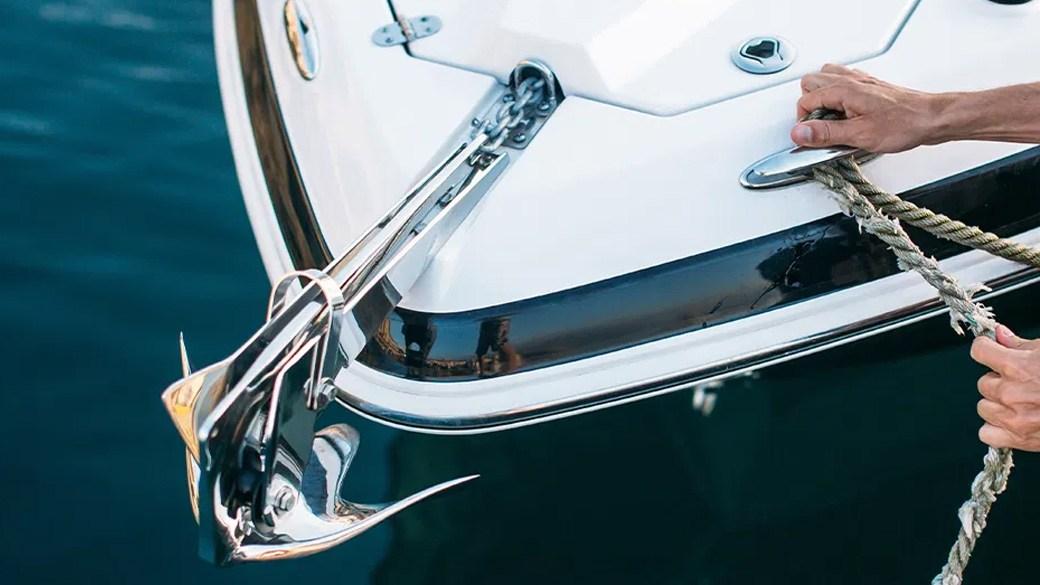Which boat anchor is best?
Buying a boat anchor may seem like a simple task; however, it is anything but. You need to consider not only what size anchor to buy but also what type. Some kinds of anchors are better suited to muddy bottoms, while others excel in grassy or rocky bottoms. If you purchase the wrong type of anchor or the wrong size, you may find that it can’t effectively hold your boat in place.
Along with the anchor itself, there are other components that contribute to effective anchoring, like the rope or chain you attach it to and the shackle that keeps them connected. In most cases, the rope wears out long before the anchor itself. Between the stretching, sun exposure and abrasion, it undergoes a lot of abuse.
Because of this, you may want to consider buying a package like the MarineNow Deluxe Portable Fluke Style Anchor Kit when replacing your anchor. It includes all the components you need and for less money than you would pay to buy each item individually.
Types of boat anchors
Before buying an anchor, it is important to learn about the different types of anchors and which types of applications they are best suited to.
Fluke anchor
Fluke anchors, also referred to as Danforth anchors, have sharp, wide flukes that easily dig into sandy and muddy bottoms. They are the most popular type of anchor, especially on small- and medium-sized boats, because of their low cost, high holding power-to-weight ratio and ability to fold flat for storage. However, they aren’t ideal for grassy bottoms because they can get tangled up in the weeds, which may prevent their flukes from deploying correctly.
Plow anchor
Plow anchors stand out for having the best holding power in a wide variety of bottom conditions, ranging from rocky to grassy to muddy. They have a single penetrating point that makes them capable of resetting themselves if the wind or current changes direction, making them ideal for long-term anchoring. However, due to their fixed design, they don’t fold flat for storage and can be cumbersome to stow on small boats with limited space. Plow anchors are most often used on heavy powerboats and cruising sailboats that need maximum holding power to prevent slippage.
Claw anchor
Claw anchors are similar to plow anchors in that they have a non-folding design but with a broader shape. They have a center point with wings on either side that give them additional holding power in soft, sandy and muddy bottoms, but make them less effective on very hard bottoms or those with thick vegetation. Like plow anchors, claw anchors are good at resetting themselves, which makes them useful in unpredictable conditions.
Grapnel anchor
Grapnel anchors look much like grappling hooks, hence the name, and have four tines that store flat. This makes them ideal for small watercraft like dinghies and kayaks. Before deploying the anchor, you extend the tines so they can grab onto structures or rocks on the bottom. Grapnel anchors are only intended for short periods of anchoring, such as when having lunch or fishing, and aren’t effective when used on soft, sandy or muddy bottoms.
Mushroom anchor
Mushroom anchors are intended for use solely in very soft bottoms where they can use suction to create their holding power. They can be a good choice for inflatables, kayaks and other small or delicate watercraft where you don’t want to risk having a sharp anchor on your boat, but they don’t have enough holding power for heavier boats. Like grapnel anchors, mushroom anchors are also only intended for short periods of use.
What to look for in a quality boat anchor
Material
Anchors are made of either aluminum or steel. Aluminum anchors have good corrosion resistance, but they are easily damaged. While they are praised for their low weight, the need to attach a longer length of the chain directly to the anchor to help it set often negates this benefit.
Mild and high-tensile steel are the most common materials for anchors because they are cheap and tough. However, unlike aluminum, steel is very prone to rust, which is why most manufacturers galvanize their steel anchors. Some also dip them in a PVC coating, which may help protect your boat against damage if the anchor accidentally scrapes against the deck or hull. You can also find stainless steel anchors, which are strong, aesthetically pleasing and have high corrosion resistance.
Holding power
Unfortunately, manufacturers don’t list the holding power of their anchors because there are many factors that affect it. Instead, they give recommendations on what size vessels a particular anchor is suitable for. However, this is a very rough guide because two boats of the same size can have drastically different weights and require different amounts of holding power. Your best bet is to combine manufacturers’ recommendations with your own judgment to determine what size anchor and how much holding power you need.
For example, if you have a 27-foot liveaboard sailboat, you will need an anchor with more holding power than someone who owns a 27-foot powerboat. In this case, you might want to choose an anchor that a manufacturer recommends for a 30-to 35-foot boat.
If you are ever in doubt, it is always best to err on the side of caution and choose an anchor with more holding power rather than less.
How much you can expect to spend on a boat anchor
It is difficult to give an accurate answer on how much you can expect to spend on an anchor because it is greatly dependent on the size of your vessel and the type, materials and size of the anchor you buy. For small power crafts up to 20 feet, you can find a suitable anchor between $20-$50. Those with medium-sized power boats up to 30 feet or small sailboats should expect to spend between $40-$125. If you have a larger powerboat or a liveaboard cruiser, expect to spend at least $150 or more.
Boat anchor FAQ
How many anchors do I need on my boat?
A. Most experts recommend carrying two anchors of different types on your boat. This way, you’ll have the right one handy no matter what type of bottom you need to anchor on. This also gives you the ability to drop a second anchor in an emergency or if you need to anchor in a heavy current or winds where your main anchor might not provide enough holding power on its own.
How can I increase the holding power of my anchor?
A. The best way to increase the holding power of your anchor is to increase the scope. The scope is the length of chain and rope between your anchor and the boat, and the longer it is, the better the holding power. In calm conditions, you may only need a 5:1 scope, which means the length should be five times the depth. If anchoring the same vessel on that same bottom type but in rough conditions, you might need a 10:1 scope for sufficient holding power.
What is the best boat anchor to buy?
Top boat anchor
MarineNow Deluxe Portable Fluke Style Anchor Kit
What you need to know: This is an all-in-one kit that comes with everything you need to anchor your boat for a reasonable price.
What you’ll love: It comes in three sizes, all of which have good holding power for their weight.
What you should consider: The edges have a rough finish.
Top boat anchor for the money
What you need to know: This affordably priced anchor has wide flukes for good holding power in sandy and muddy bottoms.
What you’ll love: It is hot-dipped galvanized for reliable corrosion resistance and each one is individually inspected for quality.
What you should consider: The welds are sloppy.
Worth checking out
Extreme Max 3006.6669 BoatTector Folding Grapnel Anchor
What you need to know: This grapnel anchor comes in a variety of sizes to suit all kinds of dinghies and small personal watercraft.
What you’ll love: It doesn’t require much storage space and doesn’t have any sharp edges.
What you should consider: The ring that holds the tines in place has a bit too much play.
Prices listed reflect time and date of publication and are subject to change.
Check out our Daily Deals for the best products at the best prices and sign up here to receive the BestReviews weekly newsletter full of shopping inspo and sales.
BestReviews spends thousands of hours researching, analyzing and testing products to recommend the best picks for most consumers. BestReviews and its newspaper partners may earn a commission if you purchase a product through one of our links.





